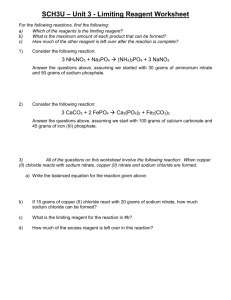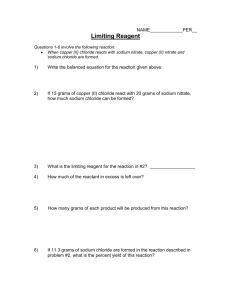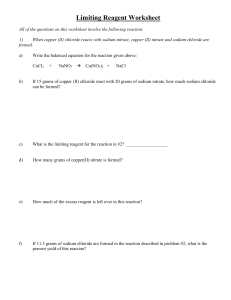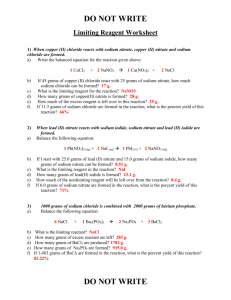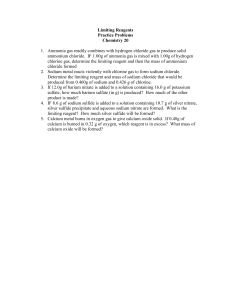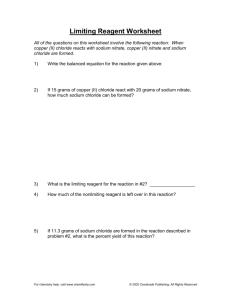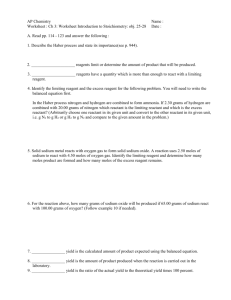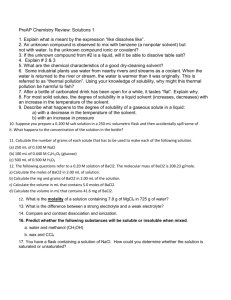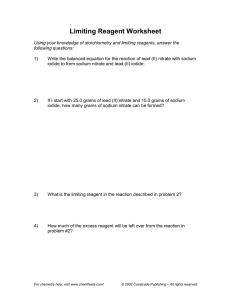Limiting Reagent Worksheet
advertisement
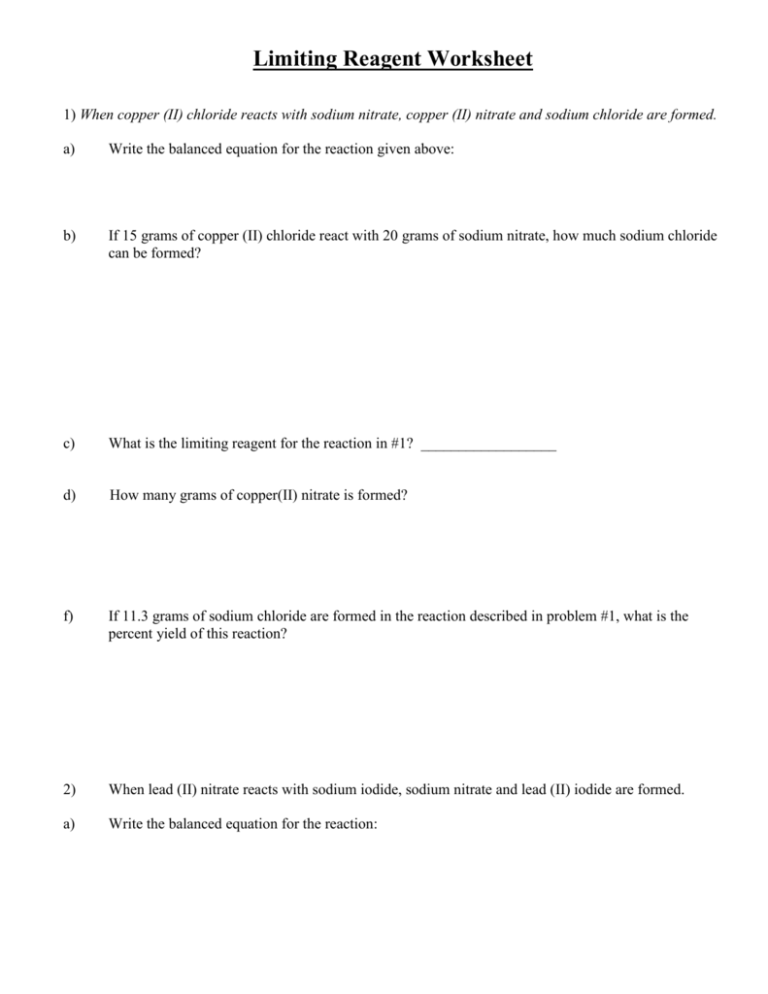
Limiting Reagent Worksheet 1) When copper (II) chloride reacts with sodium nitrate, copper (II) nitrate and sodium chloride are formed. a) Write the balanced equation for the reaction given above: b) If 15 grams of copper (II) chloride react with 20 grams of sodium nitrate, how much sodium chloride can be formed? c) What is the limiting reagent for the reaction in #1? __________________ d) How many grams of copper(II) nitrate is formed? f) If 11.3 grams of sodium chloride are formed in the reaction described in problem #1, what is the percent yield of this reaction? 2) When lead (II) nitrate reacts with sodium iodide, sodium nitrate and lead (II) iodide are formed. a) Write the balanced equation for the reaction: b) If I start with 20.0 grams of lead (II) nitrate and 15.0 grams of sodium iodide, how many grams of sodium nitrate can be formed? c) What is the limiting reagent in the reaction described in problem 2? d) How many grams of lead(II) iodide is formed? f) 3) If 6 grams of sodium nitrate are formed in the reaction described in problem #2, what is the percent yield of this reaction? A chemist burns 160.0 g of Al in excess air to produce aluminum oxide, Al2O3. She produces 260.0 g of solid aluminum oxide. Write a balanced equation for the reaction. Al + O2 a) Determine the theoretical yield. b) Determine the percent yield. Al2O3 4) 4000 grams of heptane is combusted with 7000 grams of oxygen. C7H16 + 11 O2 7 CO2 + 8 H2O a) What is the limiting reactant? b) How many grams of carbon dioxide is produced? 5) In the reaction of Zn with HCl, 140.15 g of ZnCl2 was actually formed, although the theoretical yield was 143 g. What was the percent yield?


